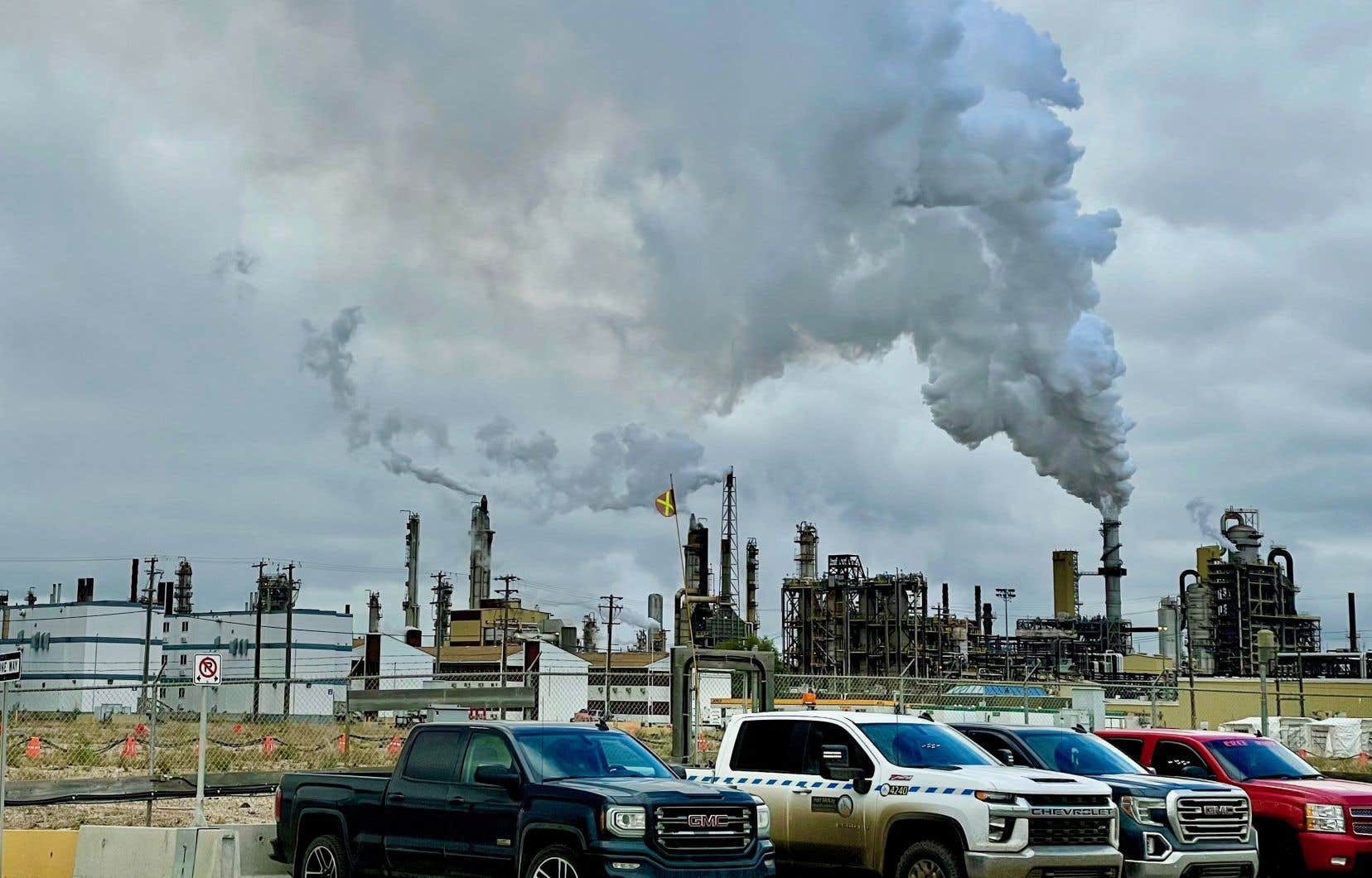After the global halt caused by the pandemic in 2020, Canada’s greenhouse gas (GHG) emissions started to rise again in 2021, according to what emerges from the report released Friday by the federal government. This rebound in emissions is mainly attributable to the increase in oil and gas production and a certain return to normal in the transport sector.
Data compiled by the federal government indicates that Canada’s total emissions reached 670 million tonnes (Mt) of GHGs in 2021, an increase of 12 Mt from 2020. The GHG balance, however, reveals that emissions were then below the 724 Mt issued in 2019.
Canada was also, in 2021, the 10e “biggest emitter” in the world and emissions per capita were 17.5 tonnes. By way of comparison, it is estimated that to limit global warming to +1.5°C, and thus meet the most ambitious objective of the Paris Agreement, average global emissions must not exceed 2 tonnes per person.
oil and gas
In the context of the return to a certain normality, after the shock caused by the global pandemic, certain industries saw their emissions start to rise again in Canada in 2021. This is the case for the mining and manufacturing industries.
The rebound in oil and gas production has also had the effect of increasing the GHG balance. Emissions from “extraction” alone reached 103 Mt, up 4 Mt from 2020, bringing emissions from the sector to a level similar to 2019. This industry alone accounts for nearly 30% of the national GHG balance.
Since 2005, the reference year used by the federal government for its plan to combat the climate crisis, emissions from the exploitation of fossil fuels in the country have increased by more than 40 million tonnes. This situation is explained by “a 215% increase” in oil sands production. The industry, which reaped record profits in 2022, also plans continued investment this year, in particular to increase production, while promising to achieve “carbon neutrality” by 2050.
The balance of the oil and gas industry also includes so-called “fugitive” emissions, which showed a balance of 55 Mt in 2021. “Since 2005, more than 200,000 oil and gas wells have been drilled and the number of wells producers increased by 8%. Production of crude oil and natural gas has also increased by 35% mainly due to Canada’s oil sands,” the government said in the “summary” released Friday, which indicates that fugitive emissions have fallen by 21% since 2005.
The national balance of GHG emissions from the fossil fuel sector does not take into account emissions during the use of fossil fuels, if they are exported and burned elsewhere in the world. Greenhouse gas emissions from the use of oil, natural gas and coal exported from Canada totaled more than 4 billion tonnes between 2016 and 2020, according to an estimate by the federal environment ministry.
“Encouraging” data
In the transport sector, the 2021 report shows emissions of 188 Mt, an increase compared to 2020, but an overall decrease compared to previous years. Road transport is obviously the heavyweight in the balance sheet, with 116 Mt.
The GHG statement, which is filed under Canada’s commitments to the United Nations Framework Convention on Climate Change, further states that emissions from solid and liquid waste treatment and disposal accounted for 21 Mt in 2021, while those of the agricultural sector represented 54 Mt.
The Minister of Environment and Climate Change, Steven Guilbeault, welcomed Friday a report that he considers positive. “The latest data on greenhouse gas emissions in Canada are encouraging. It is in the context of the strong recovery following the pandemic that we continue our journey towards carbon neutrality. Canada’s economy is becoming more efficiency-driven, and it’s becoming less polluting,” he said in a written statement.
While the COVID-19 pandemic has “unquestionably” had an impact on emissions in recent years, “the sustained decline in emissions intensity over time can be attributed to fuel switching, increased efficiency, modernizing industrial processes and growing the clean economy as well as reducing emissions intensity across the economy,” according to the federal government.
“We have already achieved almost a quarter of our 2030 emissions reduction target,” added Mr. Guilbeault. According to the Trudeau government’s plan to fight climate change, the country’s emissions must fall by at least 40% compared to their 2005 level by the end of the decade. This objective means that the country would then emit 443 million tonnes of GHGs.
More details will follow.
